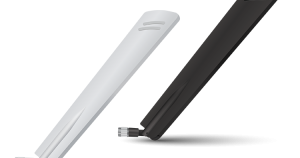IoT Satellite Connectivity Enabled by Small Ceramic Chip Antennas – Case Study Written By: Maria El Bacha & Carmen Redondo (KYOCERA AVX) | Brett Collis (EchoStar Mobile) Abstract: Traditional perceptions of satellite communications often conjure images of large antennas facilitating one-way communication. However, with the evolution of IoT satellite technologies, bidirectional communication and compact embedded antennas have become feasible, revolutionizing connectivity in remote and challenging environments. This paper explores the capabilities of EchoStar Mobile LoRaWAN® over satellite, highlighting the potential for bi-directional communication and the integration of KYOCERA AVX small chip embedded antennas within IoT devices. Through a case study, we demonstrate the functionality and effectiveness of this antenna solution in real-world applications, showcasing their role in advancing IoT satellite
Antennas
Laser Direct Structuring (LDS): Working Principles and Benefits for RF Applications Written By: Youssef Laamimat Abstract: The growing prevalence of electronic devices presents a challenge to numerous industries and markets. Addressing the industry’s need for lighter and more compact components, LDS stands out as an excellent choice. In addition, it accelerates prototype production and streamlines time-to-market. Laser Direct Structuring (LDS) technology is a revolutionary approach offering a streamlined and efficient process for creating complex 3D circuits on a myriad of substrates. LDS technology is ideal when more curves are needed or less 3D volume is available. In RF applications such as antennas, this allows the manufacture of highly intricate designs, reduces assembly costs of having the antenna outside the device,
Active Band Switching Solutions Written By: Alessandro Beretta Abstract: Today’s new and emerging wireless applications are increasingly requiring the support of multiple frequency bands. From laptops to cellular phones to wearables, devices are expected to connect to any cellular, Bluetooth™, GSM, RFID, or other networks. These expectations present challenges when it comes to antenna design, compared to a traditional design. The simplest solution — using discrete antennas for each frequency band required in the application — requires extra physical space. But this ultimately clashes with industry trends that prefer smaller and smaller solutions while still providing more bandwidth.
Connectivity is key in today’s world and devices in the market require strong signal strength to allow for peak performance. Integrating an antenna is not trivial, whether it is an off-the-shelf product or a highly customized solution, and should not be an afterthought.
The AVX antenna design team strongly recommends considering the antenna design and/or the antenna integration process as early as possible, ideally during the product design and the radio module selection. A perfect match between the radio and the antenna will ensure all wireless connectivity needs are met.





